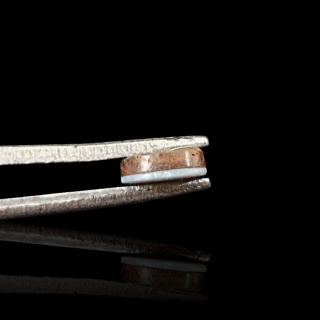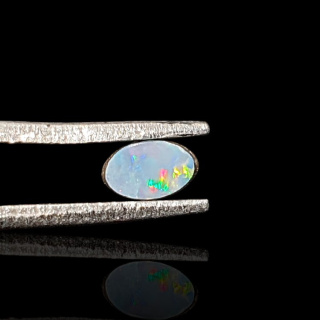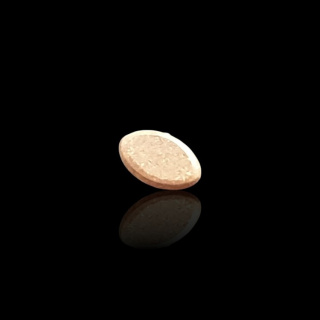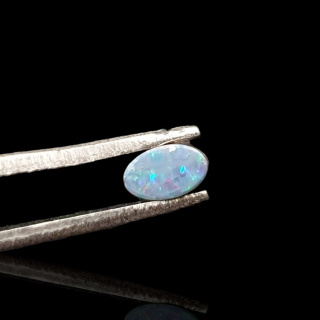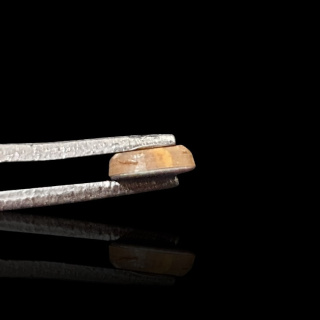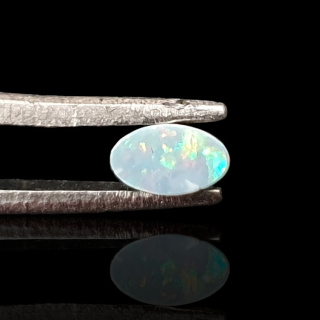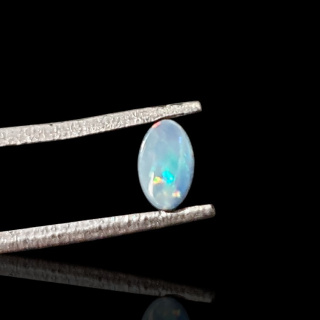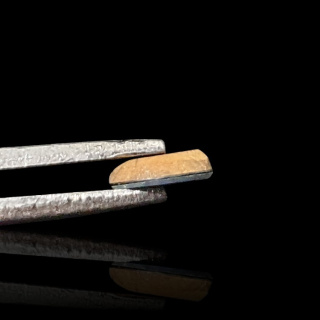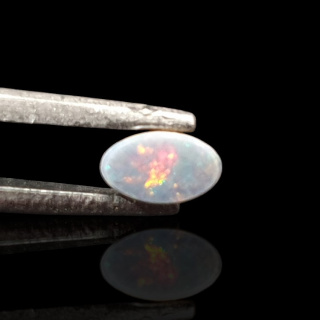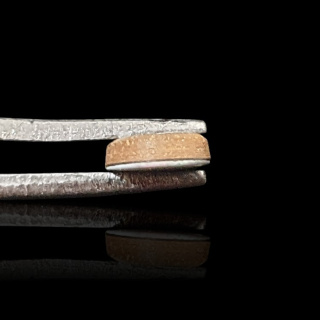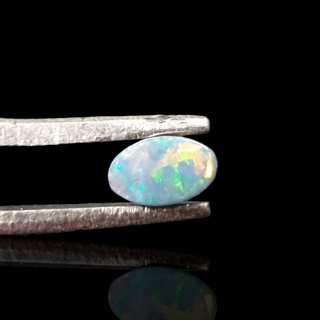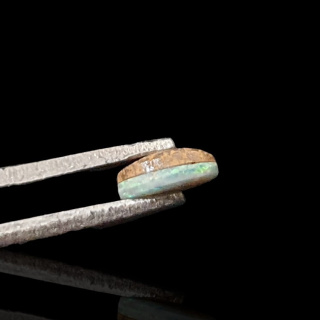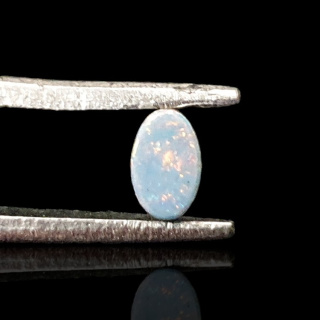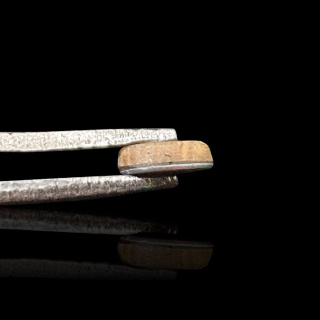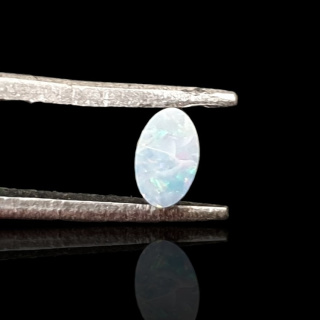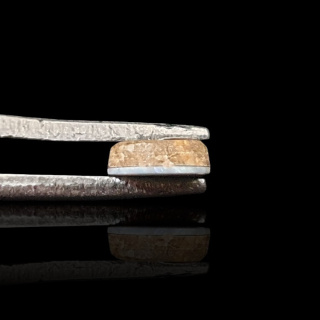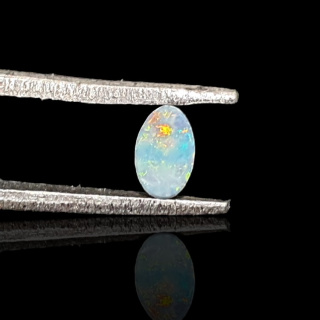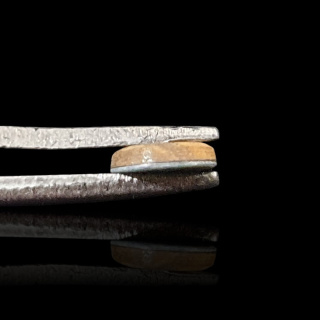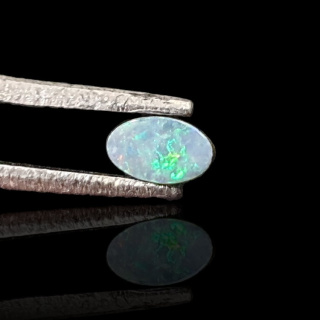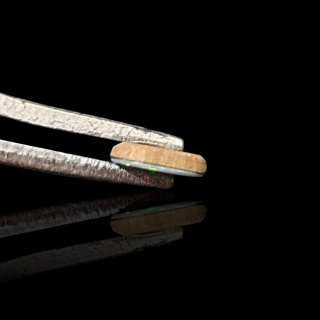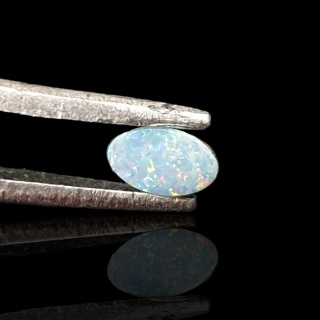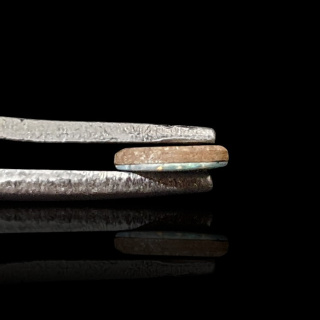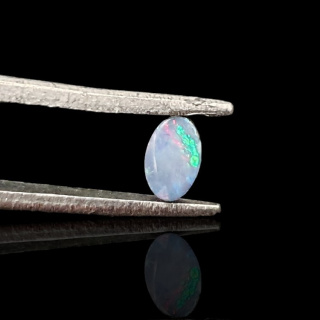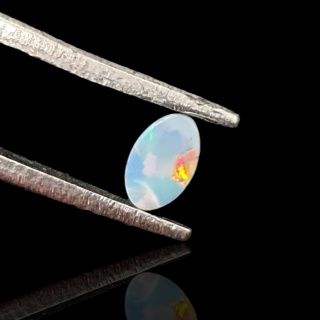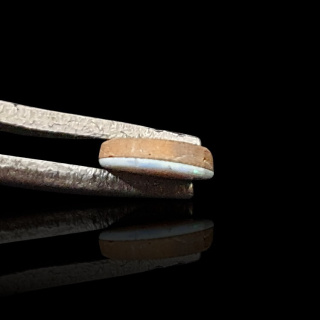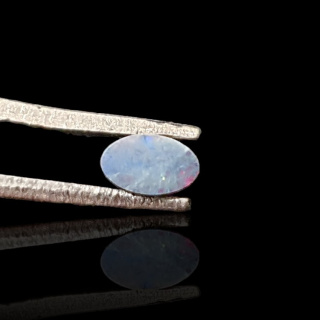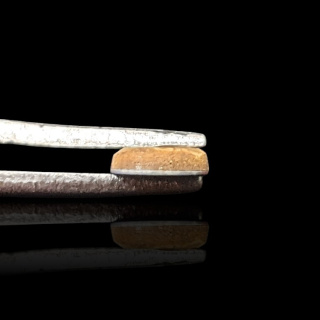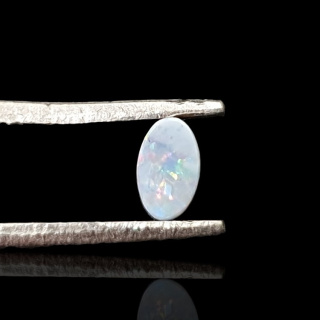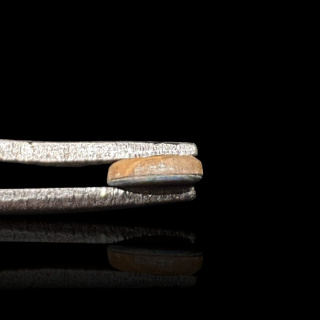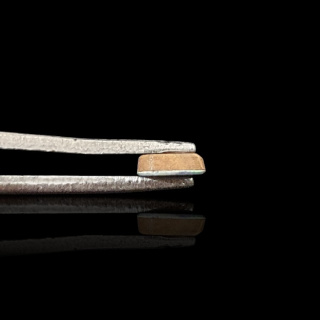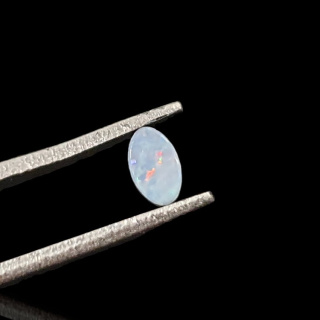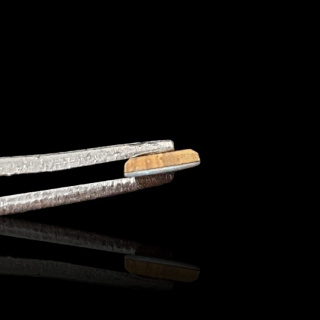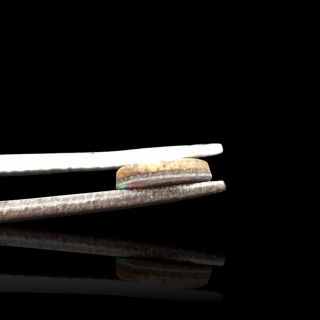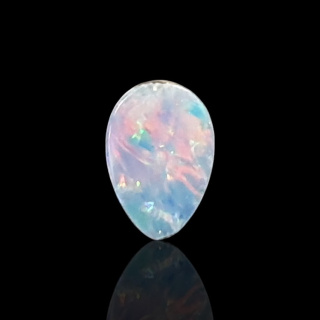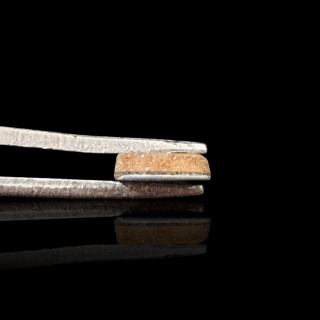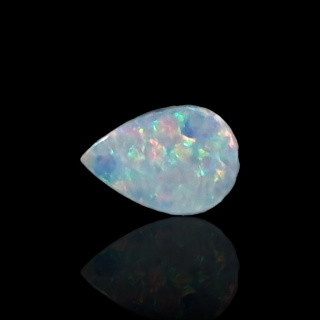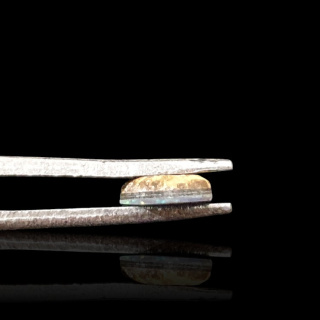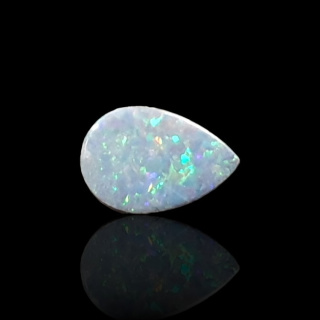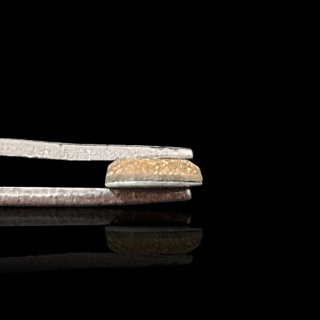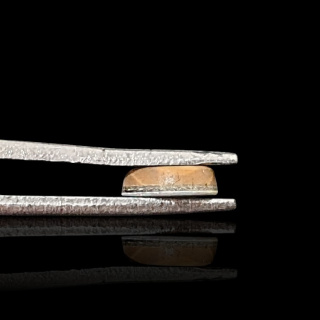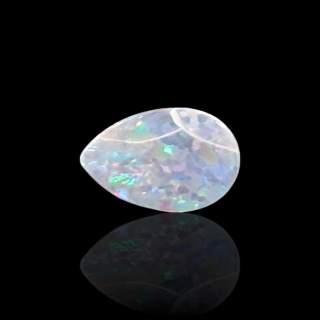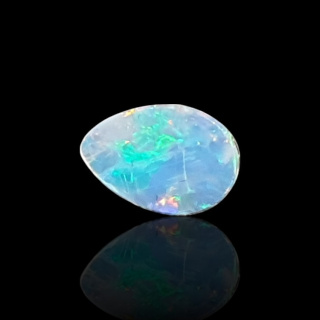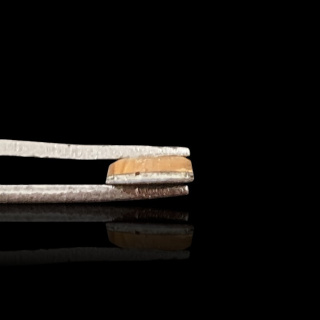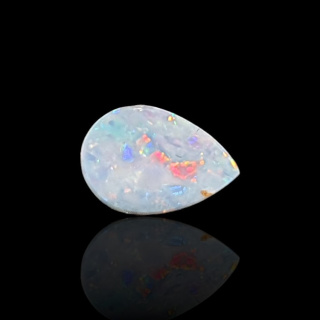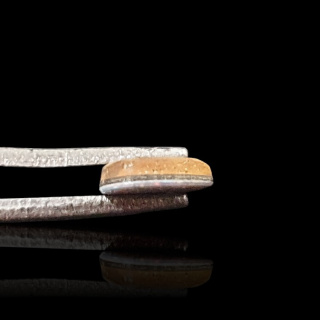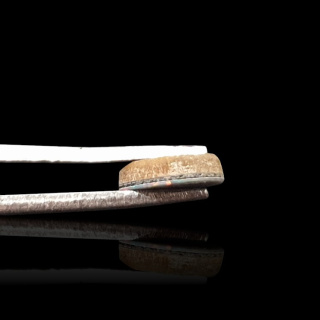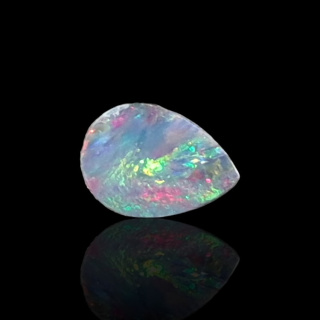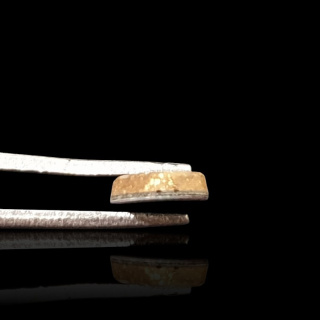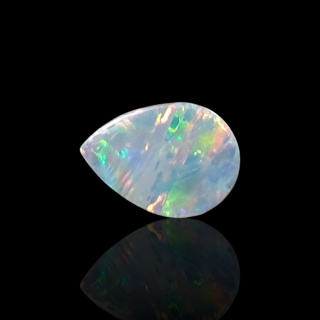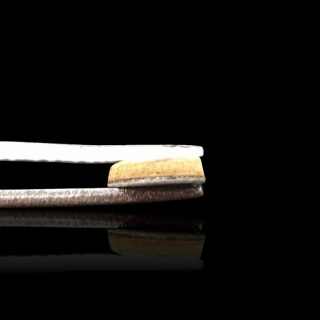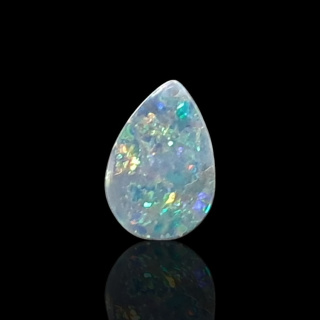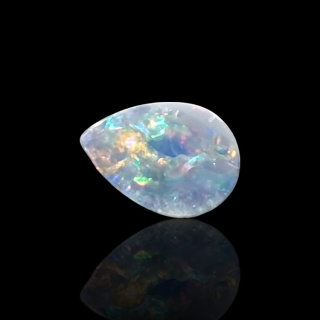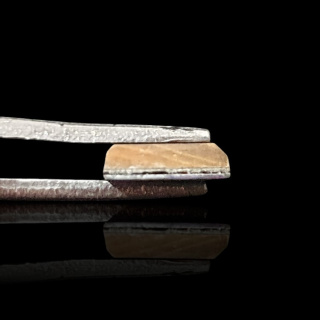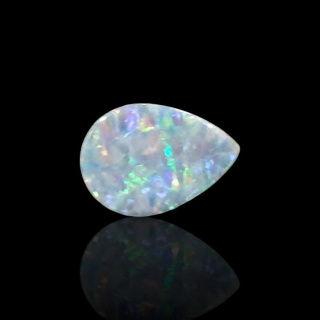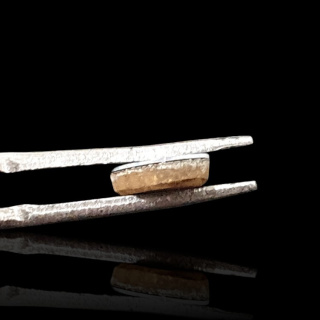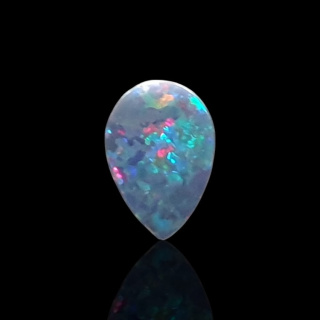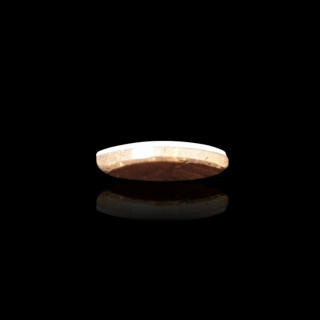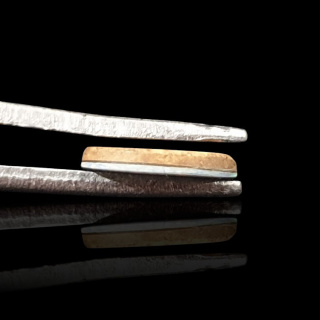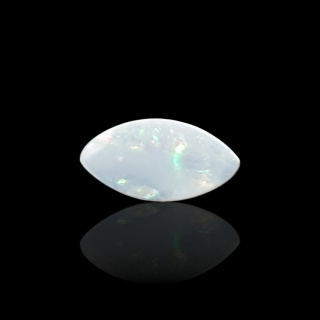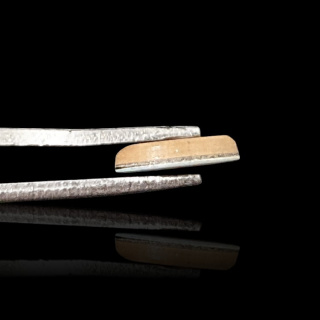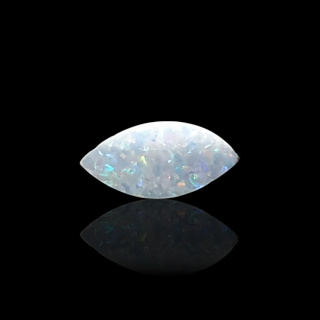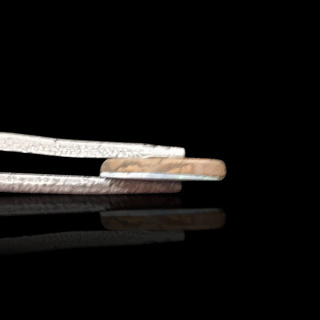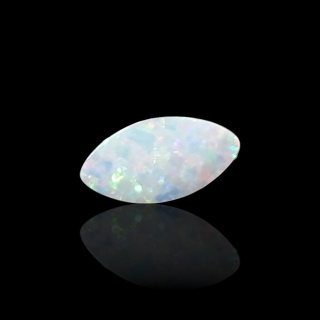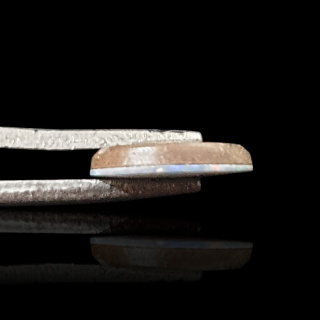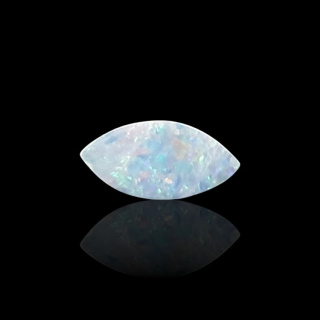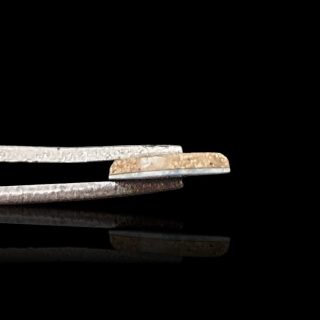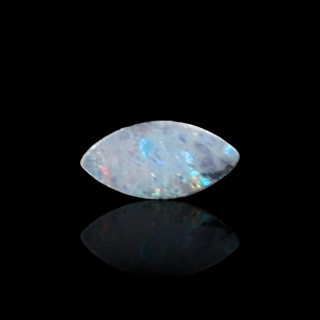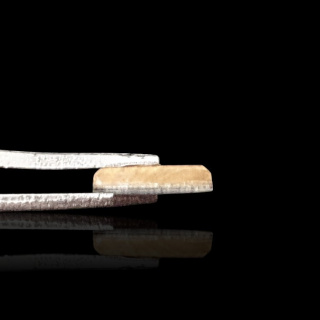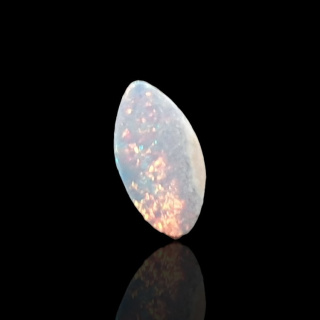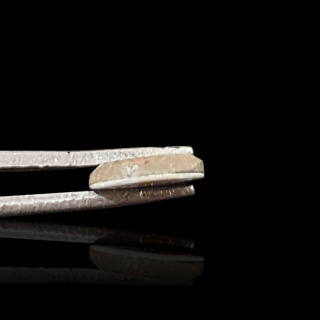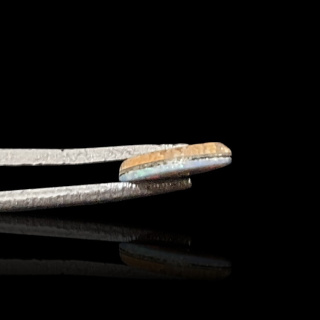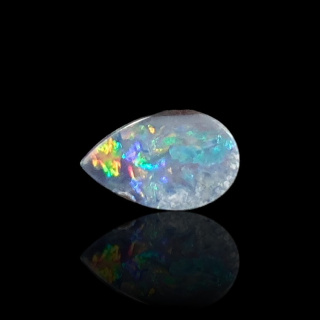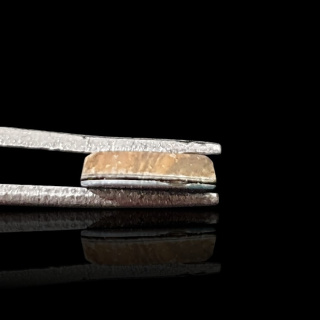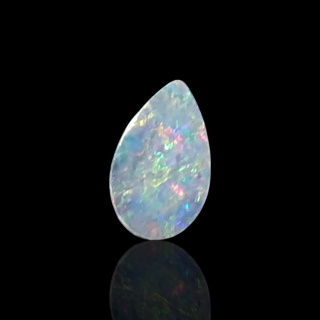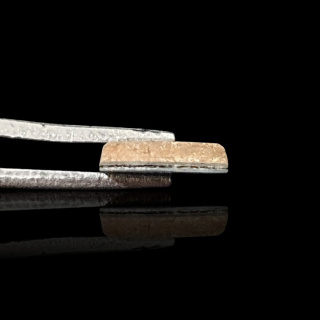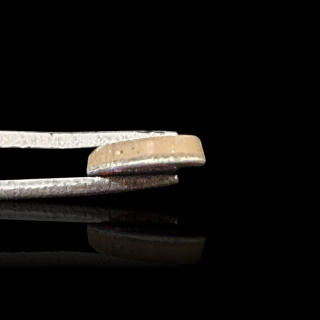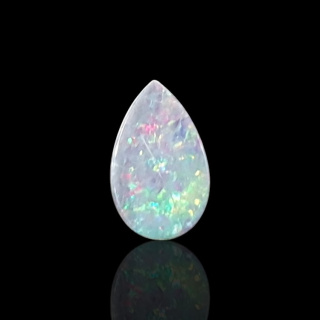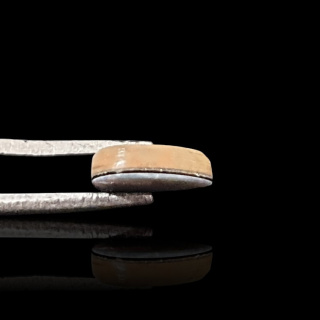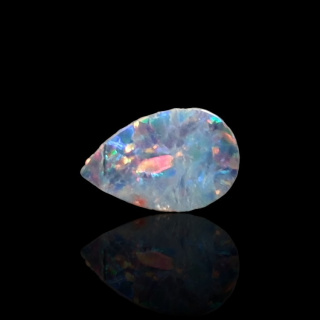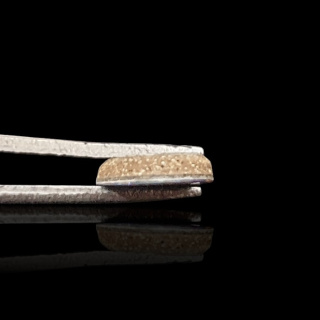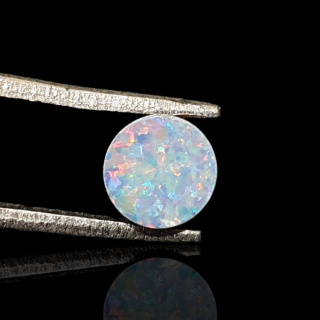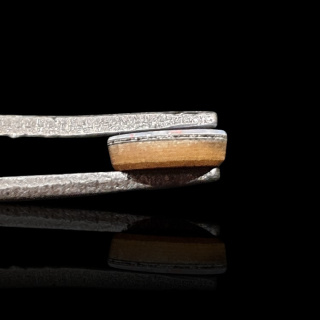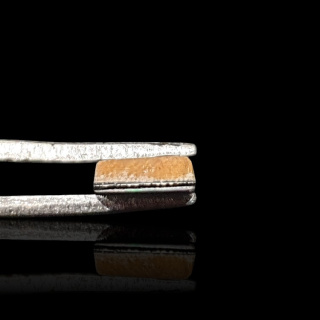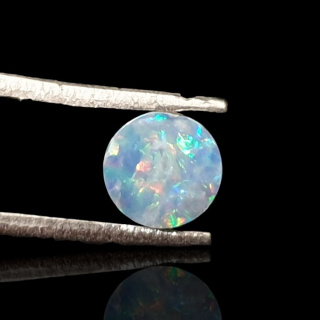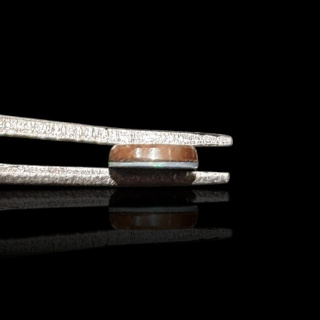Australian opal – A gemstone with magical colors
Number of products : 66Australian opal is one of the most prized types of opal, a gemstone found primarily in Australia. Opal is a hydrated silicate, and its unique feature is opalescence, a play of colors in which light is split into different colors depending on the angle at which it hits the stone. Australian opal is known for its extremely intense colors and rich shades, ranging from blue and green to red, orange, and purple.
Types of Australian opals:
Precious Australian opal (Black Opal) – the most prized type of opal. It comes mainly from the Lightning Ridge region of New South Wales. It is characterized by a dark background (black, dark blue or gray) against which the intense colors are very distinct.
-
White opal – most commonly found in the Coober Pedy region. It has a lighter background, which means that the colors may be less intense, but they can still display beautiful patterns.
-
Milky Opal – characterized by a more milky, matte appearance, often with lighter, more subtle colors.
-
Boulder Opal – this type of opal contains fragments of the parent rock in which the opal was deposited. It comes mainly from Queensland and is characterized by unique patterns resulting from the combination of opal and hard rock.
-
Doublet – a type of opal formed by combining a thin layer of natural opal with a base material, usually a darker stone.
-
Triplet – consists of three layers. The bottom layer is a dark base material, the middle layer is a very thin piece of opal, often even thinner than in a doublet, and the top layer is a transparent cover, usually made of glass, quartz or resin, which acts as additional protection for the delicate opal layer.
What are the main differences between Australian opal and Ethiopian opal?
Australian and Ethiopian opals differ in both appearance and physical properties, which means they have different uses and market prices. Here are the main differences between them:
Geological origin:
-
Australian opal: It comes mainly from Australia, especially from regions such as Coober Pedy, Lightning Ridge, and Queensland. Australian opals form in sandstone deposits, where silica has filled the cracks in the rocks over millions of years.
-
Ethiopian opal: Found in the Welo region of Ethiopia, it has different geological conditions. Ethiopian opals are often associated with volcanic deposits and form in the empty spaces of solidified lava.
Water absorption:
-
Australian opal: It is impermeable to water (i.e., hydrophobic). This means that its structure does not absorb water, making it more stable and less prone to color changes or damage from moisture.
-
Ethiopian opal: It is hydrophilic, which means that it can absorb water. When exposed to water, Ethiopian opal can change color, becoming more transparent or milky, and when dry, it returns to its original appearance. This can affect its durability and susceptibility to damage in humid environments.
Appearance and color play:
Australian opal: It is often characterized by intense, stable play of colors, especially in black opals, where the dark background enhances the vivid colors. The play of colors can be more orderly and contrasting.
Ethiopian opal: It has a lighter, more transparent background, and its play of color can be equally impressive, but often more “diffused” and variable. Some Ethiopian opals have milky or jelly-like hues, giving them a unique appearance.
Durability:
-
Australian opal: Due to their lack of water absorption, Australian opals are more durable and stable, making them a popular choice for jewelry that is worn every day.
-
Ethiopian opal: It is less durable because it can change its properties when exposed to moisture. Although many Ethiopian opals are stable, some may crack, especially if subjected to rapid changes in humidity or temperature.
Price:
-
Australian opal: It is usually more expensive, especially black and boulder opals, which are among the rarest and most prized on the market due to their intense play of colors.
-
Ethiopian opal: It is cheaper, although opals with exceptional play of color can fetch high prices. Due to its greater availability and differences in durability, it is generally more affordable.
Use in jewelry:
-
Australian opal: Due to their durability, Australian opals are more popular in high-end jewelry. They are stable and resistant to change, making them ideal for everyday use.
-
Ethiopian opal: Although also used in jewelry, it often requires more careful handling. It may be less suitable for everyday wear, especially in humid conditions, due to its water absorption.
Color variation:
-
Australian opal: It has a wide range of colors, from blue and green to red, orange, and purple. Black opals from Lightning Ridge are the most prized.
-
Ethiopian opal: Often more transparent, which can produce more subtle but equally beautiful color effects. Some Ethiopian opals have extremely bright, fiery colors that attract the attention of collectors.
How does precious opal differ from light opal and milky opal?
Australian precious opal (Black Opal), light opal (White Opal) and milky opal (Milky Opal) differ mainly in the background of the stone, the intensity of the play of colors and their market value. Here are the key differences between these types of opal:
Stone background:
-
Australian black opal: It has a dark background that can be black, dark gray, navy blue, or dark brown. The dark background contrasts sharply with the play of colors, making the colors more intense and distinct.
-
White Opal: Characterized by a light background that can be white, cream, pale, or light yellow. The play of colors is more subtle compared to black opal because the lighter background does not contrast as strongly with the colors.
-
Milky Opal: Has a milky white, dull background, often slightly semi-transparent.Milky Opal: Has a milky white, matte background, often slightly translucent. Due to this milky background, the play of colors can be delicate and less pronounced than in other types of opals.
Color play (Opalescence):
-
Black Opal: It is considered the most valuable and sought-after type of opal because its dark background makes the colors the most intense and contrasting. All colors of the spectrum can be seen, with red, orange, and green being particularly prized.
-
White Opal: The play of colors is more subtle, with lighter and more delicate colors. The light background makes the colors less intense.
-
Milky Opal: Typically exhibits less intense play of color. Due to the milky, blurred background, colors may be more subdued and less distinct.
Rarity and value:
-
Black Opal: It is the rarest and most prized of all opal types. Its intense play of color and dark background make it one of the most expensive gemstones.
-
White Opal: It is more common than Australian precious opal and usually cheaper, although exceptionally beautiful specimens can fetch high prices.
-
Milky Opal: This is the most common and least expensive type of opal, mainly due to its less intense play of colors.
Mining regions:
-
Black Opal: Most commonly found in the Lightning Ridge region of New South Wales, Australia. This region is known for producing the most highly prized black opals.
-
White Opal: Mainly sourced from Coober Pedy in South Australia, known worldwide as one of the most important sources of bright opals.
Aesthetics and popularity:
-
Black Opal: It is considered the most striking and spectacular, making it very popular in high-end jewelry.
-
White Opal: Although less intense, it is still popular, especially among those who prefer more subtle stones.
-
Milky Opal: Its more delicate appearance makes it less popular in luxury jewelry, although it is still valued for its availability and affordability.
What physical and optical characteristics determine the value of Australian opal?
The value of natural precious opal depends on several key physical and optical characteristics that affect its aesthetics, rarity, and durability. Here are the most important of these characteristics:
Opalescence of opal
-
The most important factor affecting the value of opal. Play of color is an optical phenomenon in which light is split into different colors, creating spectacular visual effects.
-
Color intensity: The more intense, vivid, and distinct the colors, the higher the value of the opal. Reds, oranges, and purples are rarer and therefore more prized than more common colors such as blue and green.
-
Color distribution uniformity: Stones with color evenly distributed across the entire surface are more desirable than those with limited color areas.
-
Color play variability: Stones that change color depending on the angle of light (known as “rolling flash”) are more valuable.
Background
-
Black Opal has a dark background (black, dark gray, or navy blue), which allows the colors to be more vivid. Opals with a dark background are most valued for their color contrast.
-
White Opal has a lighter background (white, cream, light yellow), which makes the colors less intense. It is less valuable than black opals, but is still popular.
-
Milk opal has a dull, milky white background that reduces the intensity of the colors, making it less valuable.
Transparency
-
Semi-transparent to transparent opals are valued if the play of color is distinct. In some cases, transparent opals may have intense opalescence, which increases their value.
-
Opaque opals are less valuable unless they have exceptionally intense and evenly distributed play of color.
Color patterns and structure
-
Color patterns (e.g., harlequin opal, “flagstone” or “rolling flash”) are very important. Stones with rare and symmetrical patterns can be particularly valuable.
-
Harlequin opal – where the colors form patterns resembling a grid or lattice – is one of the most sought-after and increases the value of the stone.
-
Complex structures of colors and their fluidity also influence the attractiveness of opals.
Size and weight (carats)
-
Larger opals are rarer and more valuable, but their value also depends on the quality of the play of color and other optical characteristics.
-
The weight of an opal is measured in carats, but size alone does not determine its value – it is a combination of size and play of color.
Shape and cut
-
Cutting and polishing are crucial to bringing out the beauty of opal. Opals are most often cut into cabochons (rounded, smooth surface), which best show the play of color.
-
Symmetry and proportions of the stone affect its value – a well-cut opal with an even surface is more attractive.
No flaws
-
The purer the opal, the better. Cracks, scratches, spots, or other flaws in the stone's structure reduce its value.
-
Opals, especially Australian ones, are generally more stable and resistant to cracks compared to Ethiopian opals, which increases their value.
The doublet opal gemstone – what is it?
Australian opal doublet is a type of opal that is created by combining a thin layer of natural opal with a base material, most often a darker stone such as hematite or black obsidian rock. This construction is designed to enhance the colors and play of colors of the opal, making it more visually appealing and, at the same time, more affordable than a full (solid) gemstone opal.
Two layers – Consists of two layers:
-
Top layer: a thin strip of natural precious opal that displays the opalescence phenomenon.
-
Lower layer: a darker base material that forms the background for the opal and helps bring out the intensity of the colors. The dark background emphasizes the play of colors, similar to black opals.
Effect – Doublets are designed to resemble more expensive black opals, as the dark base enhances the contrast of the opal colors.
Price – Doublets are less expensive than full gemstones because they use a thinner layer of opal and part of the cost is the base material. This makes them more affordable for people who want to enjoy the beauty of opal but do not necessarily want to invest in more expensive pieces.
Use - Opal doublets are popular in jewelry because they offer intense color play similar to solid opals, but at a fraction of the price. However, it is important to remember that doublets are more delicate and less durable than solid opals, as the thin layer of opal can be damaged or delaminate if the jewelry is not properly protected.
Opal doublet is a composite opal that consists of a thin layer of opal bonded to a dark base material, usually black obsidian, onyx, or rock. Unlike full precious opal, doublet is not a single piece of opal, which directly affects its value. Here are the main factors that affect the price of doublet opal compared to full opal:
Thickness of the opal layer
-
Opal doublet: Consists of a thin layer of opal on a backing. Because the opal layer is relatively thin (usually less than 1 mm), its price is significantly lower than that of full opal. The thinner the opal layer, the lower the price of the doublet, although well-made doublets with intense color play can still be valuable.
-
Full precious opal: This is a stone made entirely of opal, without any additional backing. The value of full opal is higher because it is not a composite stone and its thickness and uniform structure are natural.
Play of color quality
-
Opal doublet: It can display impressive color play because a thin layer of high-quality opal is deliberately applied to a dark backing, which enhances the intensity of the colors. Doublets can be visually very attractive, especially for those looking for the beauty of opal at a more affordable price.
-
Full precious opal: The play of colors depends entirely on the natural structure of the opal. Full opals, especially black opals, which display intense and vivid opalescence, are extremely valuable. The natural play of colors in full opals is more highly valued than the artificial enhancement of colors in doublets.
Base material
- Opal doublet: The dark backing used in doublets (obsidian, onyx or other materials) is relatively inexpensive and is mainly used to enhance the visual play of colors in opal. This backing has no gemstone value, which reduces the price of the doublet compared to a full opal.
- Full precious opal: The absence of a base means that the entire value of the stone comes from the opal, which significantly increases its price. In a full opal, the entire structure of the stone, without any additional materials, determines its value. Durability Opal doublet:
Durability
-
Opal doublet: Doublets are more susceptible to damage from water penetrating between the opal layer and the backing, which can cause delamination. In addition, doublets are more susceptible to scratches because the thin layer of opal can be easily damaged. In long-term use, doublets are less durable than full opals.
-
Full precious opal: It is much more durable because there is no risk of delamination. A well-preserved full opal can be worn for many years without significant damage, making it more valuable.
Aesthetics
-
Opal doublet: Doublets often look very impressive because the dark background enhances the play of colors in the opal.
-
Full natural precious opal: The naturalness and integrity of a full opal make it more aesthetically valuable. Its value stems not only from its beauty, but also from its natural form without additives.
How does triplet opal differ from doublet opal, and what are its advantages and disadvantages?
Triplet opal and doublet opal are two types of composite opals, but they differ in their structure and the way they are composed, which affects their aesthetics, durability, and value.
Differences between triplet opal and doublet opal:
Construction:
-
Doublet opal: Consists of two layers:
-
The bottom layer is a dark base material (e.g., black obsidian, onyx, or rock) that highlights the play of colors in the thin layer of opal.
-
The top layer is a thin piece of opal, usually less than 1 mm thick, but still visible on the surface of the stone.
-
-
Opal triplet: Consists of three layers:
-
The bottom layer (as in a double) is a dark base material.
-
The middle layer is a very thin piece of opal, often even thinner than in a double.
-
The top layer is a transparent cover, usually made of glass, quartz or resin, which acts as additional protection for the delicate opal layer.
-
Opal layer thickness:
-
Opal doublet: Has a relatively thin but uniform layer of opal, usually less than 1 mm thick, making it less expensive but still more authentic than a triplet.
-
Triplet opal: Uses an even thinner layer of opal, usually placed between a dark backing and a transparent cover. The opal layer in a triplet can be so thin that the opal without the protective cover would be too fragile.
Appearance and play of colors:
-
Opal doublet: Has a natural-looking play of colors because the opal layer lies directly on a dark backing, which enhances its colors. However, the opal is more exposed, which can make it susceptible to mechanical damage.
-
Opal triplet: Thanks to a transparent protective layer, the colors appear more vivid and vibrant, especially under artificial light. The coating acts as a lens, enhancing the optical effect of the play of colors. Triplet often looks more “spectacular” than doublet, but the effect is somewhat artificial.
Durability:
-
Opal doublet: It is less durable than a triplet because the opal layer is more exposed. A doublet can be susceptible to damage, especially at the edges, and water penetration between the layers can cause them to delaminate.
-
Opal triplet: It is more durable because the transparent cover protects the thin layer of opal from mechanical damage and environmental influences. Thanks to this layer, it is less susceptible to scratches and delamination caused by moisture.
Price:
-
Opal doublet: It is usually more expensive than a triplet because the opal layer is thicker and more authentic. Doublets have a higher aesthetic value and are more sought after than triplets, although they are cheaper than full natural precious opals.
-
Opal triplet: It is cheaper than a doublet because it uses an even thinner layer of opal. It is a more economical option, especially for those who are looking for a striking stone with intense play of colors but cannot afford a more expensive opal.
Advantages and disadvantages of doublet opal:
Advantages:
-
Authenticity: Doublets use a thicker piece of opal than triplets, which gives a more natural effect.
-
Vivid play of colors: The dark background enhances the play of colors in the thin layer of opal.
-
Price: Cheaper than precious stones, but still offers the beauty of natural opal.
Disadvantages:
-
Lower durability: Without a protective top layer, doublets are more susceptible to scratches and damage.
-
Risk of delamination: If water gets between the layers, the doublet may delaminate.
Advantages and disadvantages of triplet opal:
Advantages:
-
High durability: The transparent cover protects the thin layer of opal from mechanical damage, scratches, and moisture.
-
More vivid colors: The cover acts as a lens, enhancing the color effect and making the colors more vivid.
-
Lower price: Triplets are more affordable than doublets or full opals, making them a popular choice for those on a budget.
Disadvantages:
-
Less authentic appearance: The transparent cover makes triplets look less natural compared to doublets or full opals. The optical effect may seem too artificial.
-
Thinner opal layer: The opal layer in a triplet is very thin, which means that the opal makes up only a small part of the stone, reducing its value compared to doublets and full opals.
Is boulder opal more durable than other types of opal? The structure and colors of Australian boulder opal.
Yes, boulder opal is considered more durable than other types of opal, and its structure has a significant impact on its use in jewelry. Here's how its unique characteristics affect its durability and use:
Structure of Australian boulder opal:
-
Australian boulder opal is an opal that occurs naturally embedded in its host rock, usually in iron-rich sandstone or brown laterite. Unlike other types of opal, boulder opal is not cut from opal as a single stone, but remains connected to part of the natural rock.
-
This connection to the host rock is a key feature that gives it additional durability. The natural rock acts as a stabilizing base, making boulder opal less prone to cracking, chipping, and mechanical damage, which is a common problem with more delicate opals.
Durability of Australian boulder opal:
-
Greater durability: Boulder opal is considered more durable than other types of opal, precisely because of the presence of hard bedrock, which strengthens its structure.
-
Less prone to cracking: Delicate opals can crack due to temperature changes or impact. Boulder opal is less prone to such damage because the hard rock stabilizes and protects the thin layer of opal.
-
Water resistance: Unlike some Ethiopian opals, which can absorb water and change their optical properties, boulder opal is generally less susceptible to these changes, which increases its durability over time.
Use in jewelry:
-
Natural shapes: Due to the fact that Australian boulder opal often occurs in irregular, natural forms, jewelers do not usually polish or shape it as intensively as other opals. This allows many boulder opals to retain their unique, irregular shapes, which adds individuality and natural character to jewelry.
-
Thick and heavy elements: In jewelry, boulder opal is often used in rings, pendants, and other larger pieces that can benefit from its solid structure. These stones are usually heavier and larger because, in addition to the opal itself, they also contain part of the host rock.
-
Opal colors: The opal layer on the surface of the host rock is often thin but displays spectacular play of color. The dark host rock acts as a natural background, highlighting the colors of the opal, similar to the dark background in doublet or triplet opals.
-
No need for composites: Unlike doublet and triplet opals, boulder opal is naturally reinforced by rock, eliminating the need for composites. This makes it more authentic and prized in jewelry, especially by collectors.
Disadvantages of boulder opal:
-
Irregular shapes: Due to the fact that boulder opal often retains the natural structure of the host rock, it is difficult to obtain perfectly symmetrical, traditional shapes. This may be seen as a disadvantage if one is looking for more classically cut stones.
-
Limited amount of opal: The opal layer in boulder opal is usually thin, which means that the amount of opal in the stone itself is less compared to full opals. However, the parent rock itself adds character and enhances its aesthetics.
![[{[item.product.name]}]]([{[item.product.photo.url]}] 75w)


